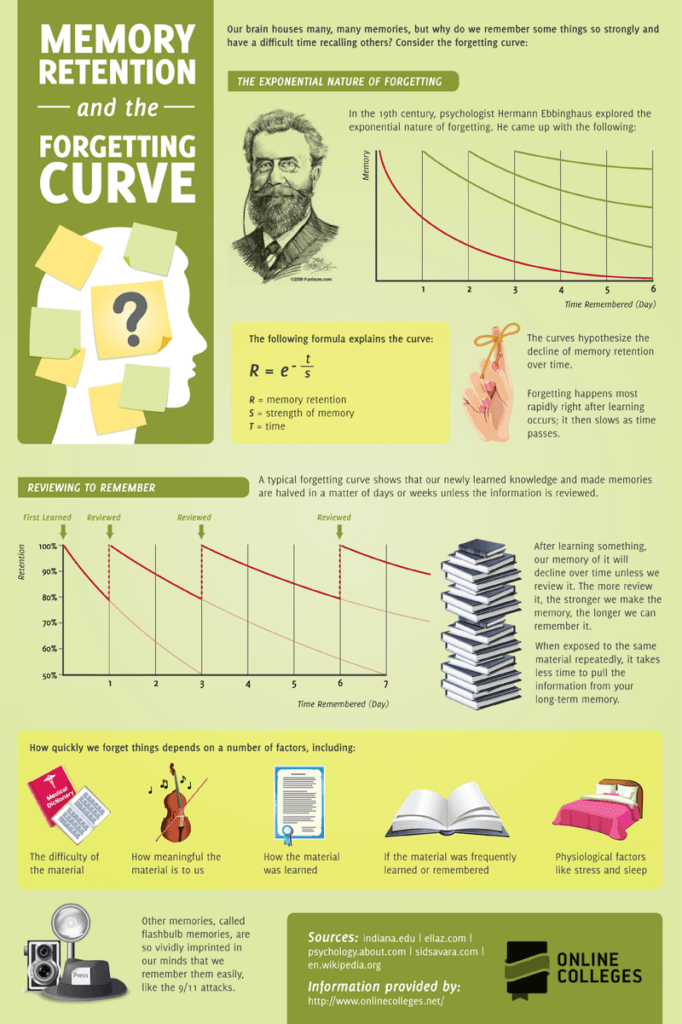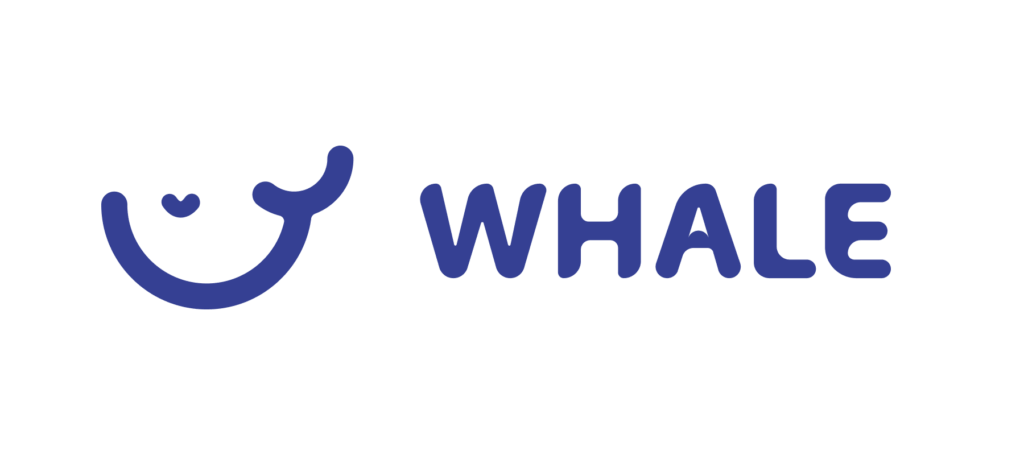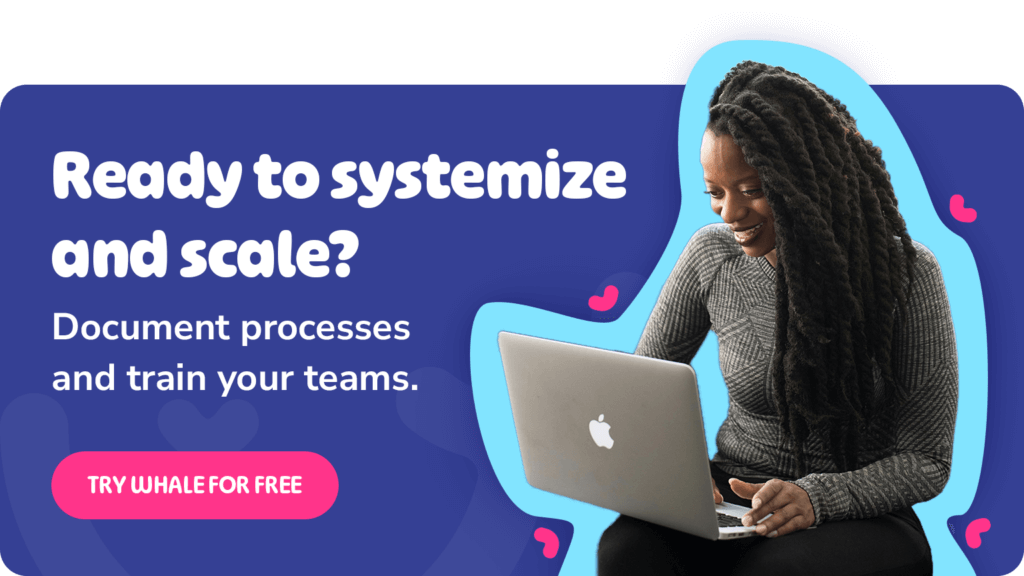Ever feel like your employee training isn’t sticking? You’re not alone!
The forgetting curve is a real challenge, with employees potentially losing up to 70% of new information within 24 hours.
Think about it – can you remember all the points from your last meeting? Or what you discussed in your last training session? Don’t worry – it’s not your fault. The human mind naturally filters out information it doesn’t deem critical for survival, which is why you might remember key takeaways but forget smaller details.
But don’t worry—we’ve got you covered. This article explores proven strategies for combating the forgetting curve and ensuring your training has a lasting impact.
Keep reading to discover how to:
- Reinforce training through regular events and knowledge-sharing
- Vary learning formats to cater to different learning styles
- Incorporate engaging content like videos and gamification
- Leverage technology with AI tools and mobile-responsive LMS platforms
In this article, we’ll walk you through each step, so you can transform your training programs and build a more skilled and knowledgeable workforce.
Let’s get started!
What is the Forgetting Curve
The forgetting curve poses a significant challenge for learning and development (L&D) professionals tasked with creating effective employee training programs. This article explores strategies to combat this phenomenon and ensure that the knowledge and skills acquired during training are retained, contributing to a more competent and skilled workforce.
Understanding the Impact of the Forgetting Curve
The forgetting curve is a psychological phenomenon that illustrates how quickly information is forgotten over time if no effort is made to retain it.
Hermann Ebbinghaus originated this concept, with his research in 1885 demonstrating the rate at which information is lost when there is no attempt to retain it.
Learners rapidly lose memory of learned knowledge in days or weeks unless consciously reviewed. Some studies suggest that humans forget approximately 50% of new information within an hour of learning it, increasing to 70% within 24 hours. This highlights the critical need for effective strategies to improve knowledge retention.
Why we forget what we learn? 🤔
This rapid forgetting occurs due to several key factors:
- Personal Meaning: Information with personal significance is retained better than abstract concepts
- Context: Physical and mental state during learning (stress levels, fatigue, etc.) significantly impacts retention
- Time: The most significant memory decline happens shortly after learning
- Presentation Method: How information is structured and delivered affects its memorability
Key Factors Influencing Forgetting in Employee Training
The rate of forgetting depends on several factors, including:
- Memory strength
- How meaningful the material is
- Physiological factors such as stress and sleep. How you feel on a certain day is likely to impact how much you remember. If you attend a training on little sleep or feel stressed, you’re less likely to remember what has been presented to you.
- Information relevance: Training should be as relevant to the learner as possible
- The complexity of learning material: Complex material may be hard to remember unless it is broken down into manageable pieces
- Presentation of material: Using visuals can enhance memorability
How to Overcome the Forgetting Curve?
To effectively combat the forgetting curve, organizations can implement several strategies:
1. Reinforce Training Regularly
Just as a superhero consistently protects their city, training needs regular reinforcement to be effective. Create an environment where learning is ongoing rather than a one-time event. This is particularly important for younger employees – studies show that 76% of Gen Z workers see learning as key to their career advancement.
- Create an open learning environment where employees prioritize training and knowledge retention
- Run frequent training events to reinforce learning
- Actively support knowledge sharing within the organization through training days, workshops, and a thorough employee onboarding process
2. Utilize Varying Learning Formats
Different employees learn in different ways. To improve retention, incorporate various learning methods:
📌 eLearning – Online, self-paced training courses
📌 On-the-Job Training (OJT) – Hands-on experience within the work environment
📌 Instructor-Led Training (ILT) – Face-to-face sessions with an expert trainer
📌 Collaborative Training – Employees learn from one another
📌 Video & Gamification – Engaging formats like interactive videos, quizzes, and games
Example: Instead of a long PowerPoint presentation, use interactive simulations and short training videos with real-life scenarios.
3. Keep It Engaging
There’s a reason we love Giphys so much. Or why we watched the entire episode of Money Heist on Netflix in just one go. Or why we share certain reels on social media. And there’s a reason no one reads your documents because maybe they’re the boring 90-page written documents kind.
- Incorporate videos, images, webinars, and gamification
- Align training with company objectives to make it more meaningful
- Make training content engaging, interactive, and easy to digest by:
- Using the "Netflix Effect" – breaking content into binge-worthy, engaging segments
- Incorporating visual elements that grab attention
- Creating clear, well-formatted information using standardized templates
- Making complex information more digestible through storytelling and real-world examples

4. Learning in the Flow of Work
Employees retain information better when they apply it immediately.
- Enable employees to learn within the context of their jobs and immediately apply new knowledge
- Promote active learning while working on software applications or digital processes
5. Create a Continuous Micro-Learning Culture
- Deliver information in smaller, manageable packages that typically last less than 5 minutes
- Improve knowledge retention and learner engagement
- Make learning part of your company’s DNA, not just an occasional event
- Create an environment where asking questions and seeking knowledge is celebrated
- Break down long training programs into shorter modules with spaced intervals
- Reintroduce sessions multiple times over days or weeks
- Have learners practice retrieving the learned information using different formats
6. Make Learning Relevant
In the battle against the forgetting curve, practice makes perfect. And besides, if you think about it, all learning should be tied to your company’s rocks and overall company objectives. If it isn’t, it’s just a nice-to-have.
- Make training materials relevant to the learner’s job
- Encourage employees to apply what they’ve learned in real-world scenarios.
- Include examples or scenarios that they experience every day
7. Keep it Accessible
- Allow learners to complete training whenever they want using mobile devices (mLearning)
- Ensure the Learning Management System (LMS) is mobile-responsive
Key Strategies for Effective Leadership Training – Making it Stick
Strategies for ensuring that leadership training sticks are built on the same principles as other training. In the end, it’s all about;
Making it Relevant to Leadership Roles
- Customize training content to address the specific challenges and opportunities leaders face in their daily roles
- Use real-world examples and scenarios that leaders can relate to, making the learning experience more meaningful and applicable
Emphasizing Practical Application
- Instead of passively receiving information, encourage leaders to actively engage with the material and test their knowledge
- Incorporate activities that require leaders to apply new concepts and skills in simulated or real-world situations
- Use active recall techniques such as quizzes, flashcards, or group discussions to reinforce learning and improve retention
Promoting Continuous Learning
- Combat the forgetting curve by spacing out training sessions and providing opportunities for ongoing reinforcement
- Break down leadership training into smaller modules delivered over a period of time
- Schedule regular follow-up sessions, workshops, or coaching sessions
- Establish a leadership development program that provides opportunities for continuous learning and growth
- Foster a culture of knowledge sharing by encouraging leaders to mentor others and participate in communities of practice
Leveraging Technology
- Utilize technology to create engaging and interactive learning experiences
- Incorporate multimedia elements such as videos, simulations, and gamification
- Utilize mobile learning platforms to provide leaders with on-demand access to training content and resources
Additional Strategies
- Encourage teaching others: Solidify knowledge by encouraging leaders to teach what they’ve learned to their teams
- Prioritize rest: Memory consolidation and retention is much more difficult with insufficient sleep. For adults, getting 7 hours or more is recommended
The Role of Technology in Overcoming the Forgetting Curve
Technology plays a crucial role in reinforcing employee training and mitigating the forgetting curve:
- AI Tools: Platforms like Whale can provide practice and repetition, particularly in areas like sales training
- Digital Adoption Platforms (DAPs): DAPs offer in-app guidance, interactive walkthroughs, and real-time support
- Mobile Learning (mLearning): Enables learning on the go, allowing users to access content whenever and wherever they want
- Learning Management Systems (LMS): A great LMS should enable creative repetition through various mediums, in addition to supporting blended learning, spaced learning, mLearning, and gamification
Practical Applications and Tools
- Recommend tools like Quizzes for active recall and flashcard creation
- Highlight the benefits of mobile learning and ensuring that Learning Management Systems (LMS) are mobile-responsive
The Bottom Line
Employee training is an essential aspect of any successful organization. It equips employees with the skills and knowledge they need to excel in their roles and contribute to the company’s growth.
The forgetting curve presents a persistent challenge in employee training, but its impact can be significantly mitigated through strategic interventions. By implementing the discussed strategies, leveraging technology, and fostering a continuous learning environment, organizations can improve knowledge retention, enhance employee competence, and cultivate a skilled workforce poised for success.

FAQs about The Forgetting Curve
What is the forgetting curve?
The forgetting curve is a psychological phenomenon that shows how quickly information is forgotten over time if no effort is made to retain it. It illustrates the decline of memory retention over time. Hermann Ebbinghaus originated this concept in 1885.
How quickly do people forget information?
Some studies suggest that humans forget approximately 50% of new information within an hour of learning it, increasing to 70% within 24 hours. Most people can only remember about 10% of learned information in a week.
What factors influence how quickly information is forgotten?
The rate of forgetting depends on several factors, including:
- Memory strength
- How meaningful the material is
- Physiological factors such as stress and sleep
- Information relevance
- Complexity of learning material
- Presentation of material
How can we combat the forgetting curve in employee training?
Organizations can implement several strategies to combat the forgetting curve:
- Reinforce Training Regularly: Create an open learning environment and run frequent training events
- Vary Learning Formats: Utilize eLearning, on-the-job training, instructor-led training, collaborative training, video training, and gamification training
- Keep It Engaging: Make training content engaging, interactive, and easy to digest
- Learning in the Flow of Work: Enable employees to learn within the context of their jobs
- Microlearning: Deliver information in smaller, manageable packages
- Spaced Learning: Break down long training programs into shorter modules
- Relevant Content: Make training materials relevant to the learner’s job
- Accessibility: Allow learners to complete training whenever they want using mobile devices
What role does technology play in overcoming the forgetting curve?
Technology plays a crucial role in reinforcing employee training:
- AI Tools: Platforms like Whale for contextual and micro learning.
- Digital Adoption Platforms (DAPs): For in-app guidance and interactive walkthroughs
- Mobile Learning (mLearning): Enables learning on the go
- Learning Management Systems (LMS): Enables creative repetition through various mediums





